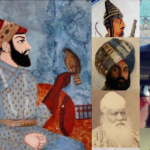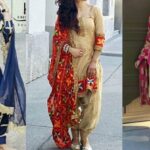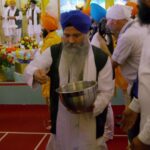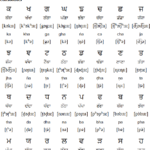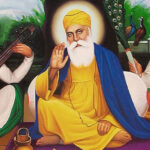In the ancient province of Punjab, people wore cotton clothing. Both men and women wore knee-high heels. A scarf was worn over the upper shoulder and the lower right shoulder. A large sheet would also be wrapped around one shoulder that would hang from the knees. Both men and women wore dots on their waists. Modern Punjabi clothing has retained this garment but in its long history has added other types of clothing.
The Punjab region was a thriving cotton industry in the 19th and early 20th centuries, with a wide variety of coarse cotton fabrics including lances, coats, tapes, chadders, coats, shirts, curtains, suits, mats, durris, towels, dusters, patka. built-in Hoshiarpur, Gurdaspur, Peshawar, Lahore, Multan, Amritsar, Ludhiana, Jhang, Shahpur, Jalandhar, Delhi, Gurgaon, Rohtak, Karnal, Rewari, Panipat, etc. The cotton industry adds to the richness of Punjabi clothing that reflects the vibrant Punjab culture in its clothing. Different types of clothing are worn based on different Punjabi festivals, local events, and festivals.
As well to various traditional clothing special types of ornaments are also very common.
Salwar Kameez
The salwar is a traditional women’s dress in the Punjab region. Made with a kurta or kameez and a specially cut salwar. In some parts of the Punjab region, men also wear a Punjabi suits.
The Punjabi suit is cut differently from the styles worn in Balo\ and the kameez is cut straight and flat with side cuffs [23] (i.e. local development like the previous versions kameez had no side squares / is a remnant of verbena). The salwar is broad at the top but fits close to the legs and is collected at the ankles. Punjabi salwar is also cut straight and tied at the ankles with a loose band reinforced with rough material. In the Punjab villages, salwar is still called suthan Punjabi suit is popular in some regions of the continent, such as Mumbai and Sindh. [29] It is also popular in Afghanistan, where it is called Punjabi.
What comes to mind when you think of Chinese clothing? In this article, we will take a look at the various clothing styles that have existed throughout the major Chinese generations, the traditional Chinese dress code, and the role of Chinese clothing in modern China.
Han Dynasty
The Han dynasty (206 BCE-220 CE) was the second dynasty of China and was a period of economic prosperity. It is regarded as one of the most powerful and influential kings in Chinese history.
Even today when people think of the Chinese, they often think of the Han people. The Han (汉族 hànzú) are the dominant group in China, and as a result, the Chinese characters are called Han (汉字 hànzì) characters. Likewise, the Mandarin language is called Han (汉语 hànyǔ) language and traditional Chinese clothing is called Han (汉 服 hànfú) clothing.
During the Han dynasty, clothing and style designs were very similar for both men and women. To distinguish between sexes, different colors, fabrics, and ornaments were used. This period is known for its “dark style,” which used fabrics in black and red.
The traditional Chinese dress, called Hanfu, dates back to the Han dynasty.
The hallmarks of Han clothing include very wide sleeves and a loose-fitting look, with garments usually consisting of two or three garments, especially a loose-fitting cross-collar dress, a long folding skirt, and an open cross-collar coat used as an outer garment as well. wrapped around the waist.
There were two main types of clothing: a curv
ed hem (曲 裾 袍 qūjūpáo) and a straight hem (直 裾 袍 zhíjūpáo). Women also had the added option of wearing 襦 裙 (rúqún) – a pleated skirt with a collar and a long skirt.
The birth of Tang
The Tang Dynasty (618-907 CE) is often regarded as one of the most successful and culturally significant periods in Chinese history. As a result of the boom of the Silk Road and its international trade, Indian, Persian, and even Western cultures were assimilated into Chinese culture.
As more and more new fabrics and dyes were introduced in neighboring countries, a great opportunity was created to facilitate the transformation of traditional fashion.
The Tang Dynasty fashions reflected the prosperity and the nature of the era.
Tang fashions were very colorful, and people put a lot of thought into their clothes. The main materials used were wool, linen, and silk, with the latter indicating superiority. Silk was reserved for the masses simply because of its price.
Gold and yellow were the special colors of the emperor and the royal family, and they gradually became symbols of the empire. Some colors can be used freely by all sections of society.
In general, women used to wear long-sleeved shirts with wide sleeves and columns that indicated their fragmentation. These shirts, which were considered revealing and bold compared to ancient fashion styles, were worn in long flowing skirts adorned with geometric patterns and protected by a belt tied around the chest.
The independent women of the Tang dynasty wore clothes that were considered revealing and bold at the time.
Cosmetics at this time were also bold, with painted eyebrows, lead face powder to create the illusion of very white skin, and floral-like patterns painted between the browsers.
Men’s clothing was a continuation of the styles seen in the Han dynasty, but with many options. Casual clothing consisted of sturdy garments with round columns, often accompanied by leather belts and boots.
The Ming dynasty
Throughout the history of Chinese descent, there were times when some parts or even the entire Chinese empire were ruled by non-Han people, especially those from Manchuria or Mongolia. The Ming dynasty (1368-1644 CE) was a Han dynasty that soon followed the Mongol-dominated Yuan empire.
The beginning of the Ming dynasty represented the restoration of the Han dynasty, so one of the main objectives of the Ming dynasty was to promote the Han culture and to enhance the sense of ownership of the Han dynasty in the new government. Thus, dress styles are very similar to those seen in the Han dynasty, albeit in a twist – to remove the influence of foreigners and ethnic minorities.
The Ming dynasty’s fashions were similar to those of the Han dynasty.
Men’s fashion revolved around square columns and patterns that were used to distinguish between social class and position. Such patterns or “symbols” included mainly embroidered designs that incorporated animals, plants, and geometric patterns.
Men often wore their hair in a bar and the officials wore a futon (襆 头 fútóu), a black hat with two wing-shaped strips made of small, oval-shaped planks on each side.
Women’s clothing became very modest during the Ming. Most of the women wore a midi top dress over a low-cut skirt.
Indigenous clothing in modern China
In recent years, traditional Chinese clothing has become quite common in modern-day China. This is especially true among members of the new generation.
A source of pride and cultural recognition
In recent years, there has been a renewed interest in traditional Chinese culture, which may also be due to the proliferation of contemporary dramas.
More and more Chinese youth represent the revitalization of Chinese clothing (especially 汉 服 hànfú) and some have even begun to wear these styles while engaging in daily relaxation.
Today, it is not uncommon to see a group of Chinese teenagers or young adults dressed in traditional attire while ordering bubble tea and roaming the city center in big cities. Many now consider traditional clothing as a source of national pride and a way of expressing the beauty of Chinese history and culture.
a Chinese teacher wearing a Chinese dress standing in front of a yellow background looking forward in a covered advertising language

